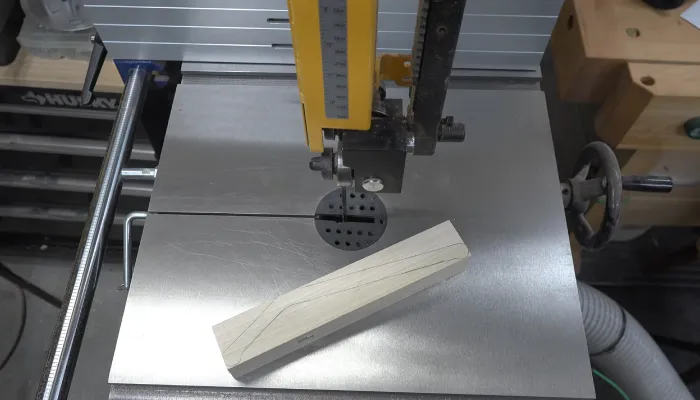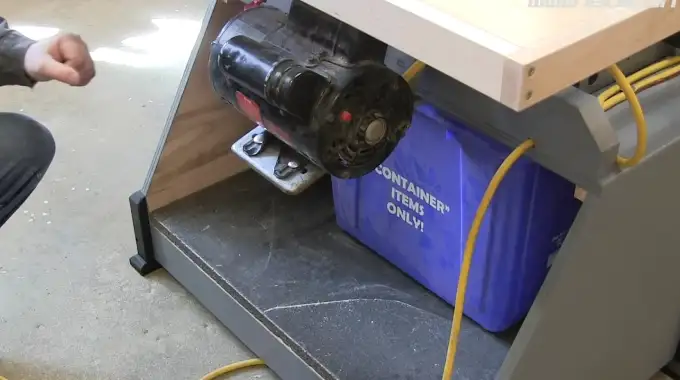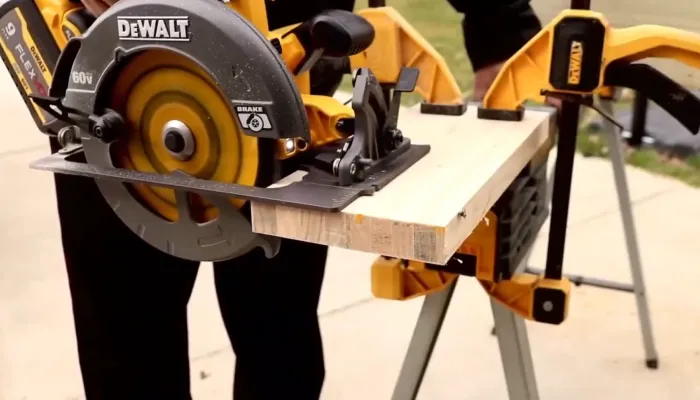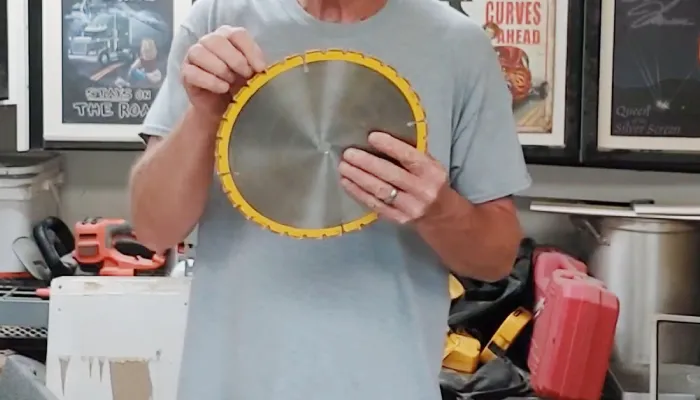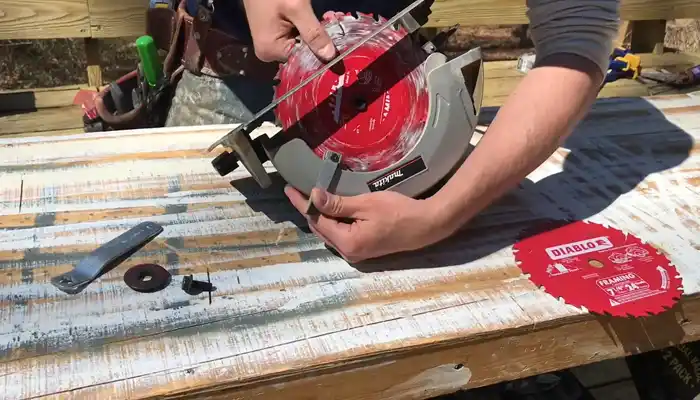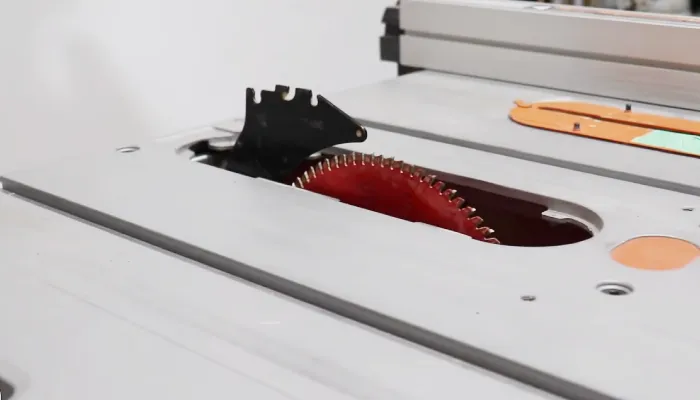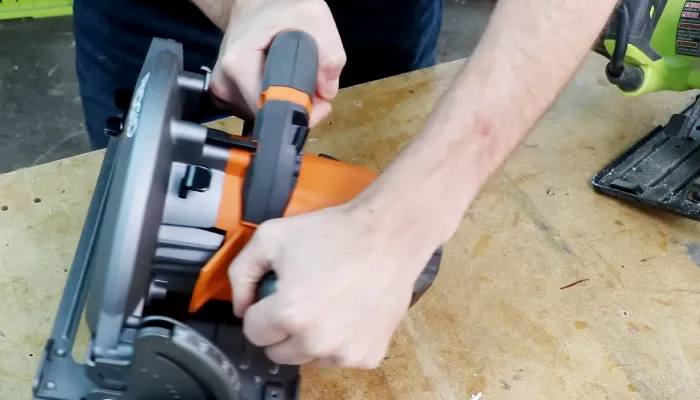How to Use a Bandsaw Safely: 11 Practical Steps
The bandsaw is among the most versatile and indispensable tools for woodworkers and metalworkers, standing out for its precision and efficiency. However, the bandsaw’s power and utility are responsible for ensuring safety and proper usage.
That’s why I’ve researched how to use a bandsaw safely and want to share my knowledge with you.
Always wear the necessary safety gear, such as goggles and earplugs, to ensure a safe working environment. Additionally, setting up the workspace properly and inspecting the blade for any damage or dullness is essential.
Checking the tension and alignment of the blade and adjusting the blade guides will further contribute to a safe and efficient bandsaw operation.
Here, I’ll explain step-by-step exactly how to use a carpentry bandsaw safely. Let’s dive in and ensure we’re all equipped to handle this powerful tool cautiously and confidently.
How to Use a Bandsaw Safely: Follow the Steps
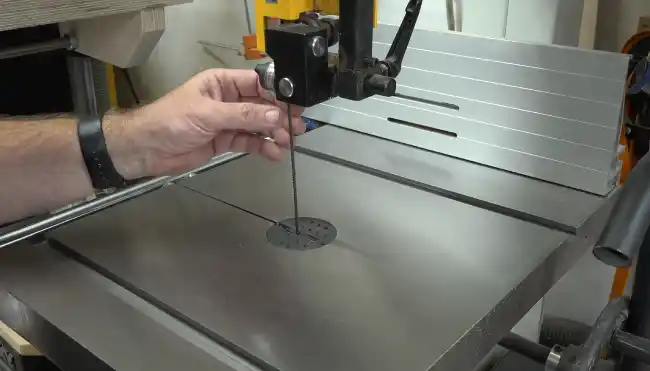
When using a bandsaw, it’s crucial to prioritize safety. Here, I listed out the steps to use a bandsaw safely:
- Wearing safety gear
- Setting up the workspace
- Inspecting the blade
- Checking tension and alignment
- Adjusting blade guides
- Securing the material
- Starting the bandsaw
- Making controlled cuts
- Monitoring the cut
- Completing the cut
- Cleaning and maintenance
No 01. Wearing Safety Gear
To ensure your safety while operating a bandsaw, I recommend always wearing the necessary safety gear, including safety glasses, hearing protection, and appropriate clothing.
- Safety glasses or goggles are essential to protect your eyes from flying debris that can cause serious injury.
- Similarly, wearing hearing protection helps minimize the impact of the loud noise generated by the bandsaw and prevents long-term damage to your hearing.
- Additionally, wear appropriate clothing, such as long sleeves and pants, to avoid entanglement with the machine.
- Loose-fitting clothes or jewelry can get caught in the moving parts of the bandsaw, leading to accidents. You should never use hand gloves when operating a bandsaw or any other type of machinery saw. They can get caught in the machine, resulting in serious injury.
No 02. Setting Up the Workspace
To begin, you must clear any clutter in the area to avoid tripping hazards and ensure smooth movement. Adequate lighting is essential, as it will help you to see the cuts clearly and avoid accidents.
Also, pay attention to the stability of the surface where the bandsaw is placed, ensuring it’s sturdy and won’t wobble during operation. Ventilation is another crucial aspect; it helps remove dust and keeps the air fresh. Finally, keep the floor clean and dry to prevent slipping.
No 03. Inspecting the Blade
After setting up a well-organized workspace, inspect the bandsaw blade to ensure its safety and functionality. Carefully examine the blade for any signs of damage, such as cracks, chips, or missing teeth. Any such issues can compromise the blade’s structural integrity and pose a safety hazard.
Additionally, check for dullness of your bandsaw blade by running a finger lightly along the blade’s edge. If it feels rough or fails to produce a slight resistance, it indicates that the blade needs sharpening or replacement.
No 04. Checking Tension and Alignment
I advise using a tension gauge to check the tension and follow the manufacturer’s guidelines to set the correct tension. It’s important to note that an over-tensioned blade can lead to premature wear, while an under-tensioned blade can cause poor cutting performance.
Next, check the alignment of the blade by verifying that it runs parallel to the bandsaw’s guides and wheels. Any misalignment can result in uneven cuts and potential safety hazards.
No 05. Adjusting Blade Guides
To ensure the safe and efficient operation of the bandsaw, I advise adjusting the blade guides to maintain stability and prevent the blade from wandering off course.
As the manufacturer recommends, the upper and lower blade guides should be set close to the blade. This helps to minimize any potential vibrations and ensures that the blade stays on track during cutting.
When adjusting the blade guides, ensure they aren’t too tight, as this can cause excessive friction and unnecessary strain on the blade. On the other hand, if the blade guides are too loose, the blade may veer off course and compromise the accuracy of the cuts.
No 06. Securing the Material
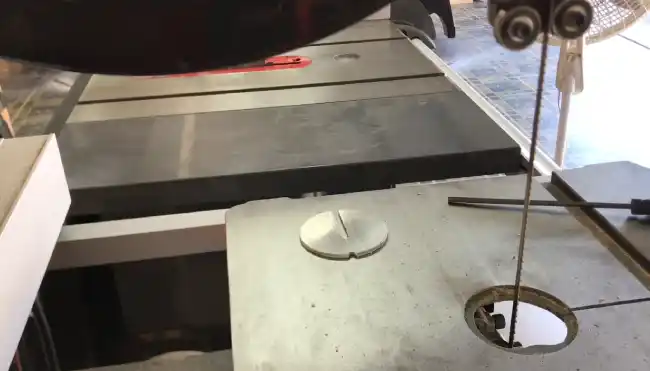
Now your bandsaw is ready to cut. And it is time to secure the material firmly to the bandsaw table using clamps or other appropriate methods to ensure its stability and prevent any shifting or binding during the cutting process. This step is crucial for both safety and accuracy.
By securing the material, you can maintain control over the piece and reduce the risk of accidents. The clamps should be positioned strategically to hold the material in place without interfering with the blade’s path.
Additionally, you should ensure that the material is properly aligned with the blade and that there’s enough clearance for the cut.
I believe taking the time to secure the material properly will help you achieve cleaner cuts and minimize the chances of mishaps.
No 07. Starting the Bandsaw.
Once everything is in order, follow the manufacturer’s guidelines to start the machine. Usually, this involves flipping the power switch and allowing the bandsaw to reach its desired speed gradually. Not rushing this step is important, as the machine needs time to warm up and reach optimal operating conditions.
I’m ready to begin making cuts once the bandsaw runs smoothly and at the appropriate speed (1000 FPM). Starting the bandsaw correctly ensures the machine operates efficiently and reduces the risk of accidents or damage.
No 08. Making Controlled Cuts
Maintaining a steady and controlled feed rate is a crucial step in using a bandsaw safely. It’s important not to force the material through the blade when making cuts. This can lead to kickback or unsafe cutting conditions.
Instead, let the blade do the work and guide the material through with steady and even pressure. Keep your hands safe from the blade at all times, using push sticks or other tools for guidance.
No 09. Monitoring the Cut
During the cutting process, closely monitor the bandsaw and the cut material for any signs of unusual vibrations, noises, or resistance. In order to cut angles with a bandsaw successfully, it is important to do so in the right direction.
- If you notice any unusual vibrations, it could indicate a problem with the bandsaw’s alignment or blade tension.
- Unusual noises, such as grinding or scraping, might suggest the blade is dull or improperly installed.
- Resistance while cutting could indicate that the material is too hard for the blade or that the blade is dull.
In any of these situations, immediately stop the machine and investigate the issue before continuing.
No 10. Completing the Cut
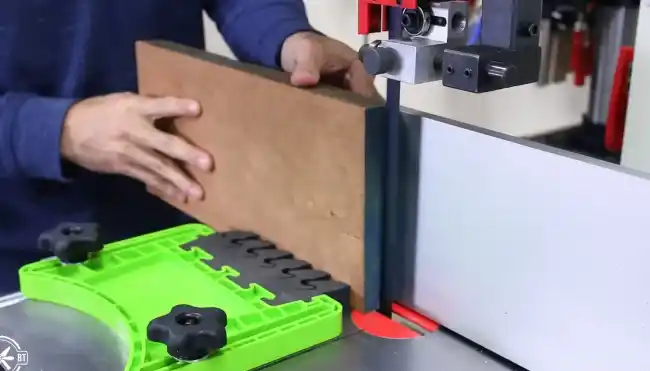
After carefully monitoring the cut for any signs of issues, complete the cut on the bandsaw by releasing the material and stopping the blade.
Once the cut is finished, let go of the material and avoid touching the blade or making any adjustments while it’s still in motion. I recommend waiting patiently for the blade to come to a complete stop before lifting the material or changing the bandsaw settings. This step is crucial to prevent any accidents or injuries.
No 11. Cleaning and Maintenance
Regular cleaning and maintenance are essential to ensuring a bandsaw’s safe operation. After each use, unplug the machine and thoroughly clean it. Remove sawdust or debris, paying special attention to the blade and guides. This will prevent buildup that can affect the saw’s performance.
Additionally, routine maintenance should be performed to keep the bandsaw in optimal working condition. Regularly inspect the blade for any signs of damage or wear, and make necessary adjustments to the tension. I believe this will ensure smooth and accurate cuts every time.
What are the hazards of a bandsaw?
When operating a bandsaw, it’s crucial to be aware of the hazards associated with this tool. One of the main hazards is the risk of the blade breaking and being thrown out of the work zone. This can cause serious injury to anyone in the vicinity.
Another hazard is the in-running nip pinch point, where the moving blade can catch loose hair, clothing, gloves, or body parts and pull them into the cutting edges. To avoid getting pinched, it’s important to firmly support the table’s workpiece.
I recommend wearing appropriate personal protective equipment to ensure safety when using a bandsaw.
Can I use a bandsaw for cutting both wood and metal?
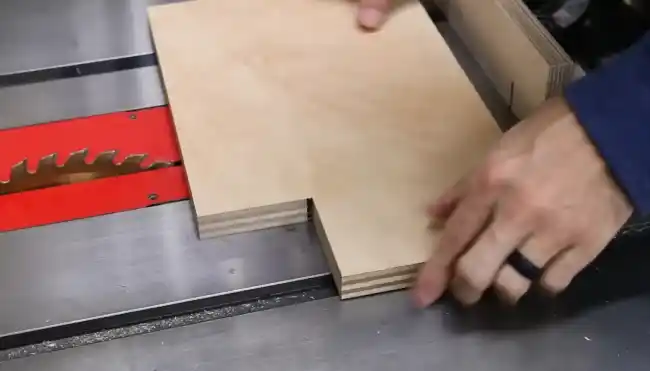
Bandsaws are different for each material, so they may not be suitable for both materials. For woodworking projects, you should use a bandsaw specifically designed for cutting wood (speed: 600 to 2,600 FPM). In metalworking projects, it is best to use a bandsaw meant to cut metal (speed 100 to 300 FPM).
Attempting to cut metal on a wood bandsaw is dangerous and can result in a broken blade, damaged bandsaw, and poor-quality cut. I recommend choosing bandsaws for resawing separately for wood and metal if you need to cut both materials at once.
Can I use a bandsaw for sanding projects?
While a bandsaw is primarily designed for cutting wood and metal, it can also be used for sanding projects. However, using a bandsaw for sanding can require some setup adjustments.
First, you’ll need to remove the guides and alter the tracking. This allows for more freedom of movement while sanding. Setting the blade guides close to the wood is also important to ensure better-cutting results and increased safety.
Additionally, it is crucial to select the correct grit for sanding based on the project requirements. Applying even pressure during sanding will help remove imperfections and achieve a smooth finish.
Keep in mind that while a bandsaw can be used for sanding, there are dedicated sanding tools that may be more efficient and precise for this task.
Use Bandsaw with Safety in Mind
In my opinion, mastering a bandsaw requires safety-conscious practices, meticulous blade selection, and adherence to operational guidelines. As I discussed above, understanding blade choices, tension adjustments, and material handling is essential for creating delicate curves and cutting straight lines precisely.
Regular maintenance, including blade inspections and proper storage techniques, ensures the longevity and optimal performance of the bandsaw.
I believe these practices can help enthusiasts and professionals unlock this versatile tool’s full potential while prioritizing safety and achieving outstanding results. So, wear your safety gear, sharpen your blades, and get cutting.

